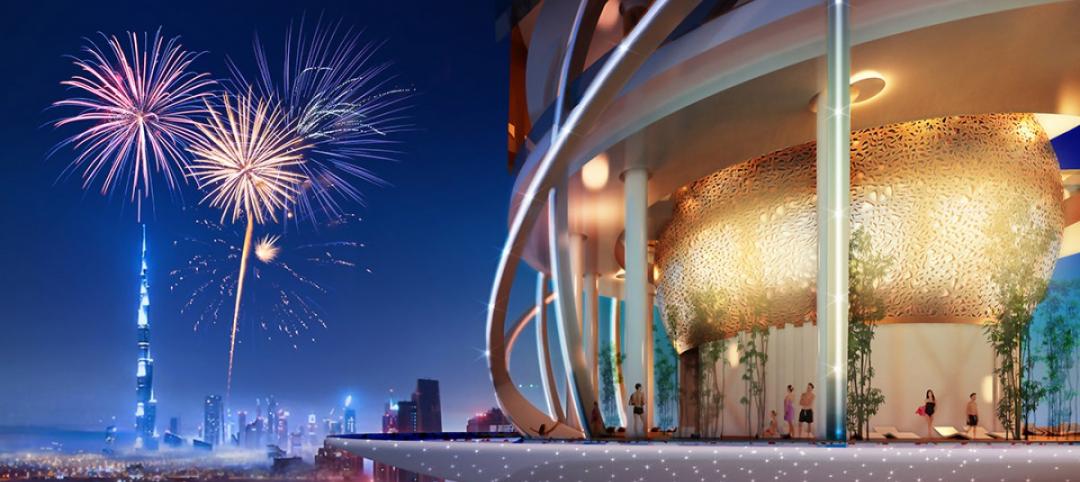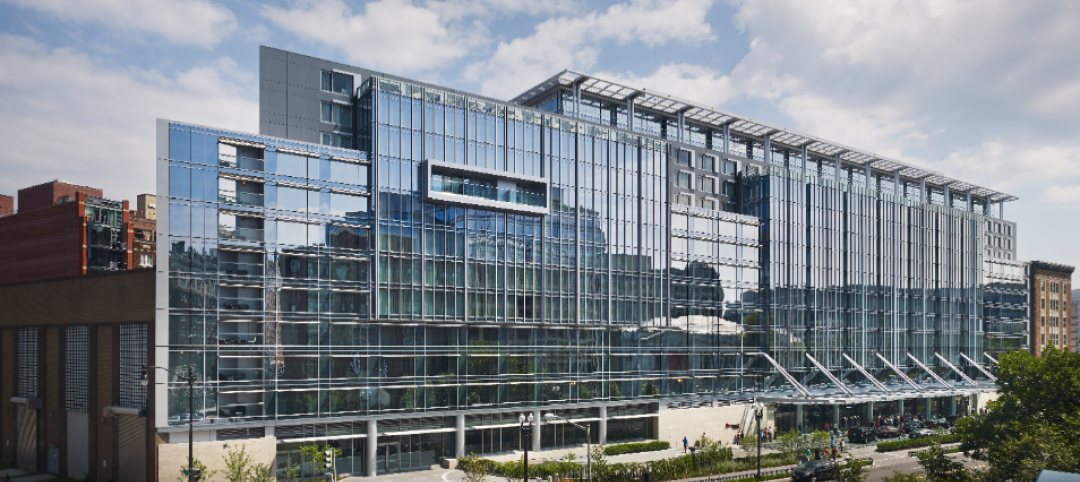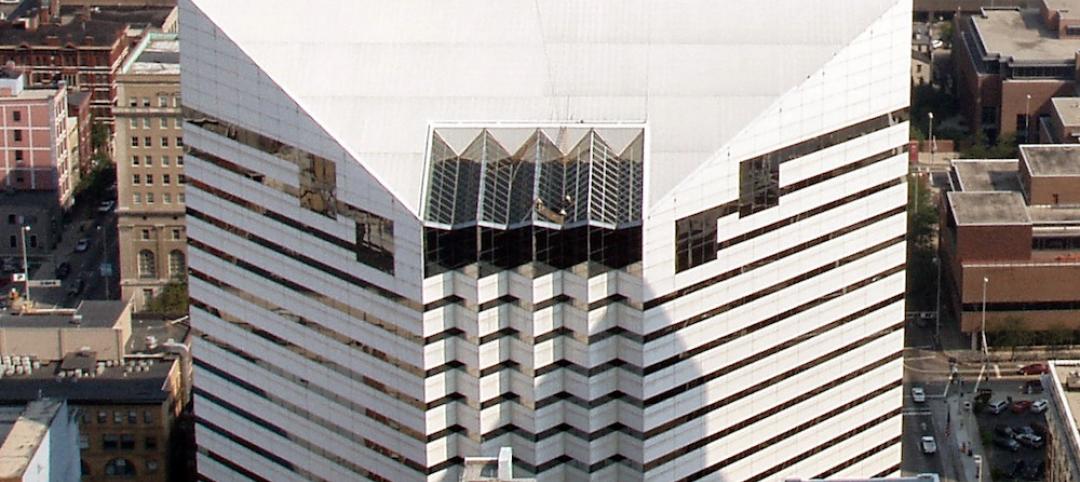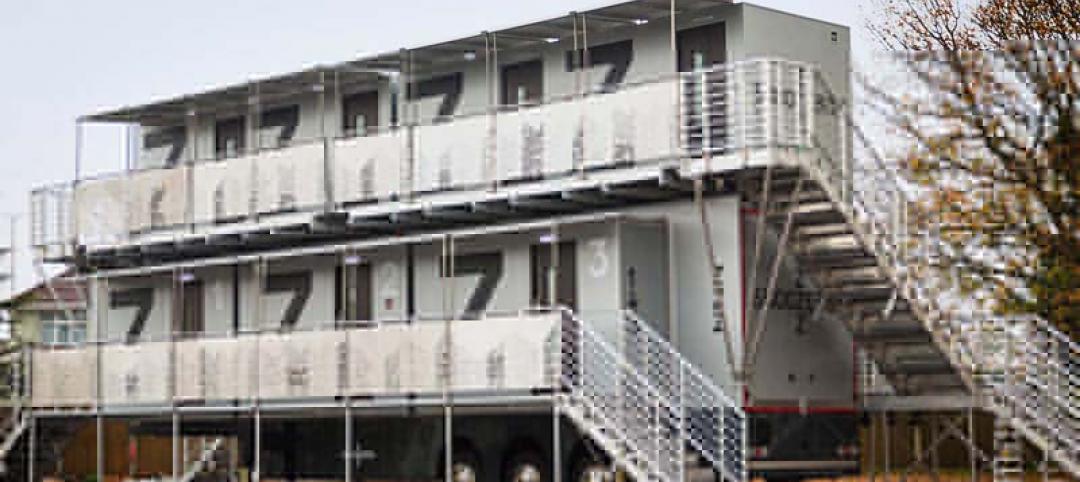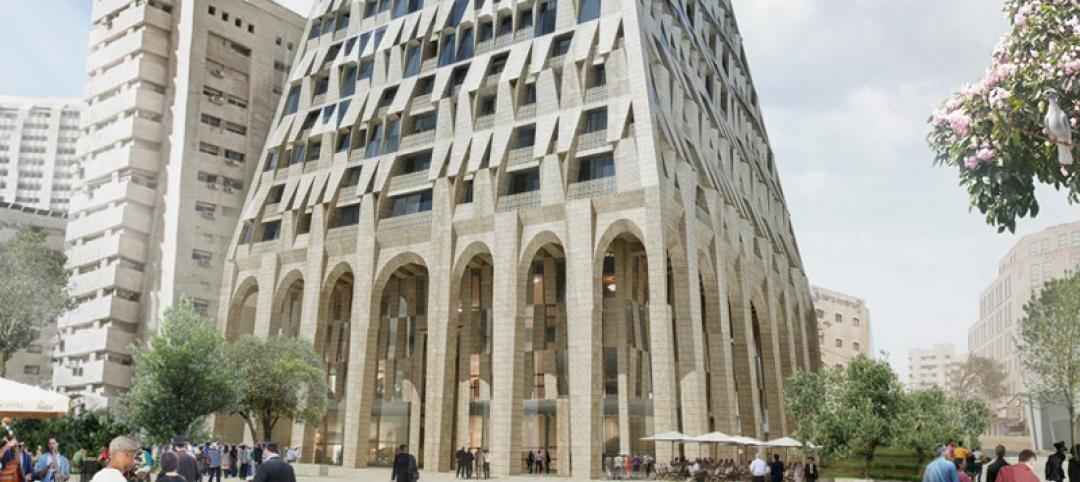Marriott International’s new headquarters building in Bethesda, Md., sits adjacent to the 205,000-sf, $65.9 million Marriott International Headquarters Hotel, which opened last January. The hotel, with 244 rooms, welcomes its guests with a two-story lobby whose candle-shaped lights suspend from a ceiling that rises 34 feet. The lobby includes a grand staircase that doubles as seating.
Lobbies often form guests’ first impressions of hotels, and in recent years lobbies have evolved beyond places to check in and mark time to being showcases for the hotel’s brand of hospitality. “More and more, lobbies are designed to be social gathering places, useful for both personal work and leisure,” says Brandon Johnston, LEED AP, DBIA, Operations Manager for Hensel Phelps, the Marriott hotel’s core and shell GC. (Gensler was the AOR on this project.)
PCL Construction has seen “strong demand for lobby redesign, renovation, and makeovers,” says its Vice President of National Business Bob Hopfenberg. “Restaurants and bars are moving into public lobby space versus being tucked away in a remote location of the property.” Daniel Adache, Chairman of Adache Group Architects, observes that as more guests are “working nomads,” branded and independent hotels are expanding the lobby experience to include food and beverage, entertainment, and support technology. One of Adache’s recent design projects, the 14-story, 138-room Aloft Hotel Fort Lauderdale, includes a 5,000-sf second-floor lobby with a bar, outdoor terrace, and a breakfast establishment, called Re:fuel Aloft.
Scott Lyons, Commercial Core Market Leader for DPR Construction, adds that lobbies are set up to keep guests on premises longer and to help them differentiate their experience on the property by incorporating local art and materials, local smells and sounds, and live music.
Technology drives user experience in hotel designs
The prominence of lobbies accentuates a larger trend that’s finding hotels emphasizing personalized services and technology, and local authenticity. This trend is touching all parts of hotels: One of Layton Construction’s recent projects was a major renovation of the Ritz-Carlton in Kapalua, Hawaii, that upgraded the resort’s lobby and bar, converted a restaurant to a club lounge, and improved the property’s landscaping and pool, according to Will Summerhays, Layton’s Vice President.
Here’s a closer look at hotel trends, based on interviews with eight AEC firms contacted for this article:
1. The personal touch: Making guests feel special is the name of the game. Summerhays notes that brands such as AC Marriott have the guest’s name on the TV to welcome them when they enter the room. Marriott’s Element brand features filtered water in each guestroom, and areas for yoga training. Lyons of DPR Construction cites such in-room activities as exercise bikes and guided workouts on demand. And more hotels these days are pet friendly.
Hotels are striving to present their patrons with “Instagrammable” moments that might get posted (and thereby promote the hotel to a wider audience), say Hopfenberg of PCL and Emily Marshall, IIDA, NCIDQ, Principal and Interior Design Director with HBG Design. Marshall points specifically to the new Caption by Hyatt Beale Street Memphis, whose accommodations carry through the hotel’s energy with a “bold and irreverent design” that features a work-and-play seating area.
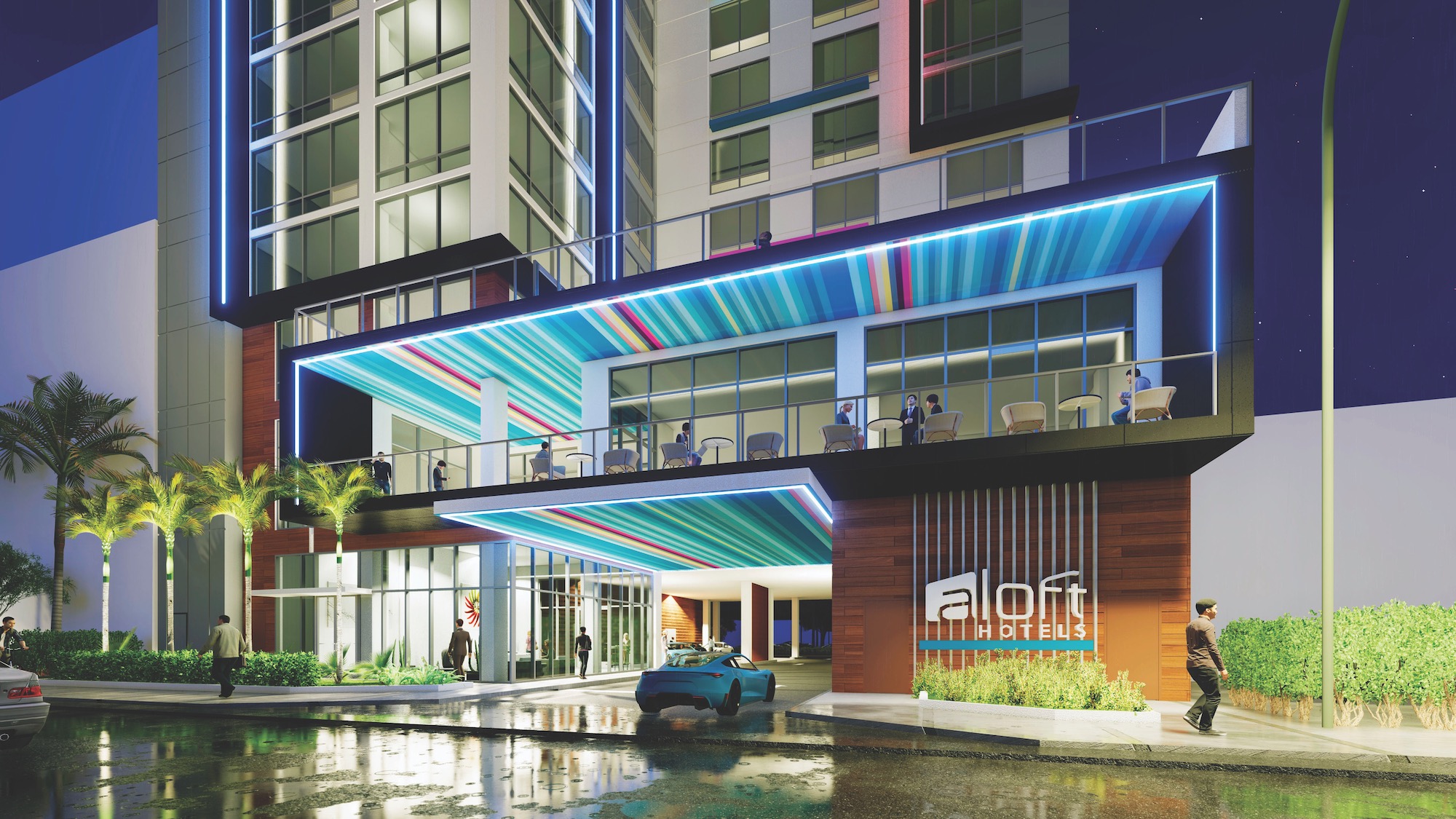
Scenic rooftop bars, innovative gyms, high-end restaurants, and wellness amenities are among the personal touches that more hotels are offering, says Scott Skidelsky, President of Balfour Beatty’s Southeast division.
2. In-room grandeur. “Guests are looking for enhancements everywhere,” observes Jeff Damron, AECOM’s Associate Vice President and Principal. That’s especially true of the rooms they stay in, in terms of décor, fixtures, finishes, and linens.
Experts agree that hotels in general have been upgrading their guestrooms’ bathrooms with better lighting, fixtures, and finishes. Some are installing heated floors, although that amenity is mostly confined to higher-end hotels. Hopfenberg notes that some hotels allow guests to control their rooms’ lighting, blinds, and HVAC via a smartphone app.
Johnston of Hensel Phelps says that boutique hotels in particular are using higher-end materials in their bathrooms, furniture, fixtures, and equipment. Johnston is also seeing less closet space, and more emphasis on outlets to plug in personal technology devices.
ALSO SEE: BD+C's 2022 Hotel Giants Rankings
• Top 115 Hotel Sector Architecture and AE Firms
• Top 70 Hotel and Resort Engineering and EA Firms
• Top 80 Hotel and Resort Contractors and CM Firms
3. Tech, and touchless interaction. AECOM’s Damron says his firm now gets requests from hotel clients to integrate smart technology as a way of enhancing the guest experience and improving the hotel’s operations. These requests, he says, include door lock sensors, temperature monitors, and occupancy sensors that are part of hotels’ energy management systems.
HBG Design’s Marshall notes that remote check-in has evolved to where guests can register online or through a kiosk in the hotel lobby or bar, and can select their room, floor, view, accessibility to amenities, and upgrades. “It is similar to electing your seat on an airplane,” she notes. Marshall elaborates that Caption by Hyatt also gives its guests access to their room keys in Apple Wallet.
Marshall also points to another recent project in Memphis, Hyatt Centric One Beale, with motion-detecting floor lighting designed into the beds.
Kurt W. Seeman, LEED AP, Operations Manager for Hensel Phelps in Colorado, has seen a shift in focus among hotels that are trying to future-proof their infrastructure by using a Gigabit Passive Optical Network (GPON) that gives operators the foundation needed for any “front of house” systems (such as reservations) that might become available down the road.
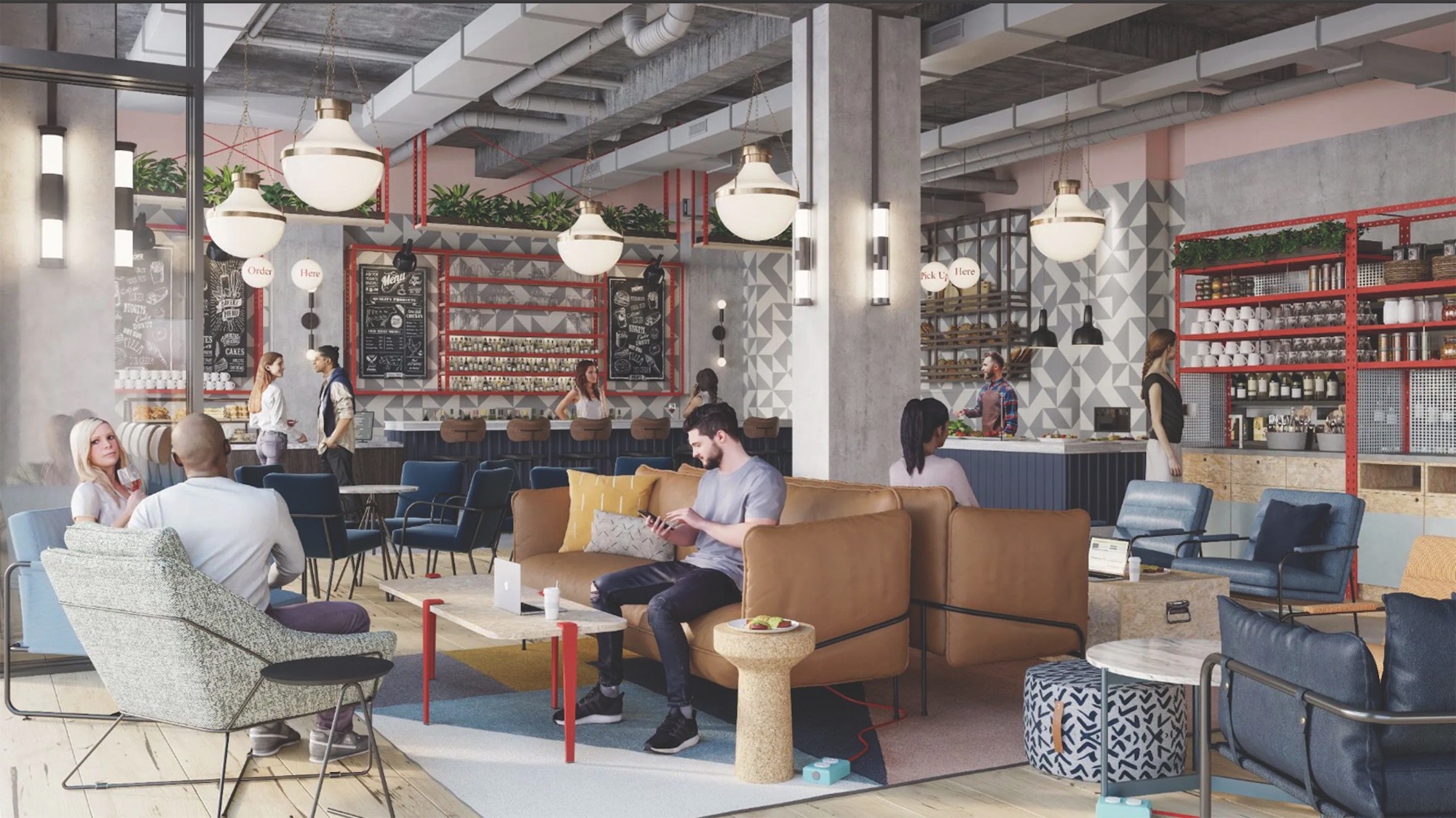
4. F+B pervades the property. It’s no secret that hotel operators see food and beverage (F+B) services as a money stream. Consequently, F+B, in various forms, is available in more areas of hotels. “Restaurants and bars have become the star amenity for many hotel properties,” says PCL’s Hopfenberg. “Hotels are turning spaces into boutique speakeasies, food halls, and bars, with rooftop bars more popular than ever.”
Balfour Beatty’s Skidelsky is seeing more hotels with high-end restaurants branded with named chefs. More broadly, DPR’s Lyons is seeing more niche cafés, coffee bars, artisanal Grab & Go markets, high-end dining, local-fare-inspired dining, and late-night venues within hotels.
At Caption by Hyatt, F+B is part of the design and brand message, says HBG Design’s Marshall. A multifunctional lounge space called Talk Shop encompasses the hotel’s entire first floor, and showcases all-day fare and regional favorites with locally sourced ingredients. Talk Shop includes an expansive patio and beer garden, with open fire pits.
Marshall adds that her firm is working with an international client to convert an underused breakfast space for flexible, all-day use.
Hotel designs reflect community history
5. Reflecting the community’s history. Authenticity has been a buzzword for hotels for quite a while, as operators position their properties as extensions of their communities. AECOM’s Damron makes the intriguing observation that this trend has its origins in timeshare ownership in hotels, “that is changing the landscape of how hotels will be managed in the future.”
Adache says that hotel design can offer insights into the culture and history of the surrounding market, and capture the ambience of the community. One such example is the HBG-designed Caption by Hyatt, whose building is integrated into the historic main building of Wm. C. Ellis & Sons Ironworks and Machine Shop, one of Memphis’s oldest and longest-running businesses.
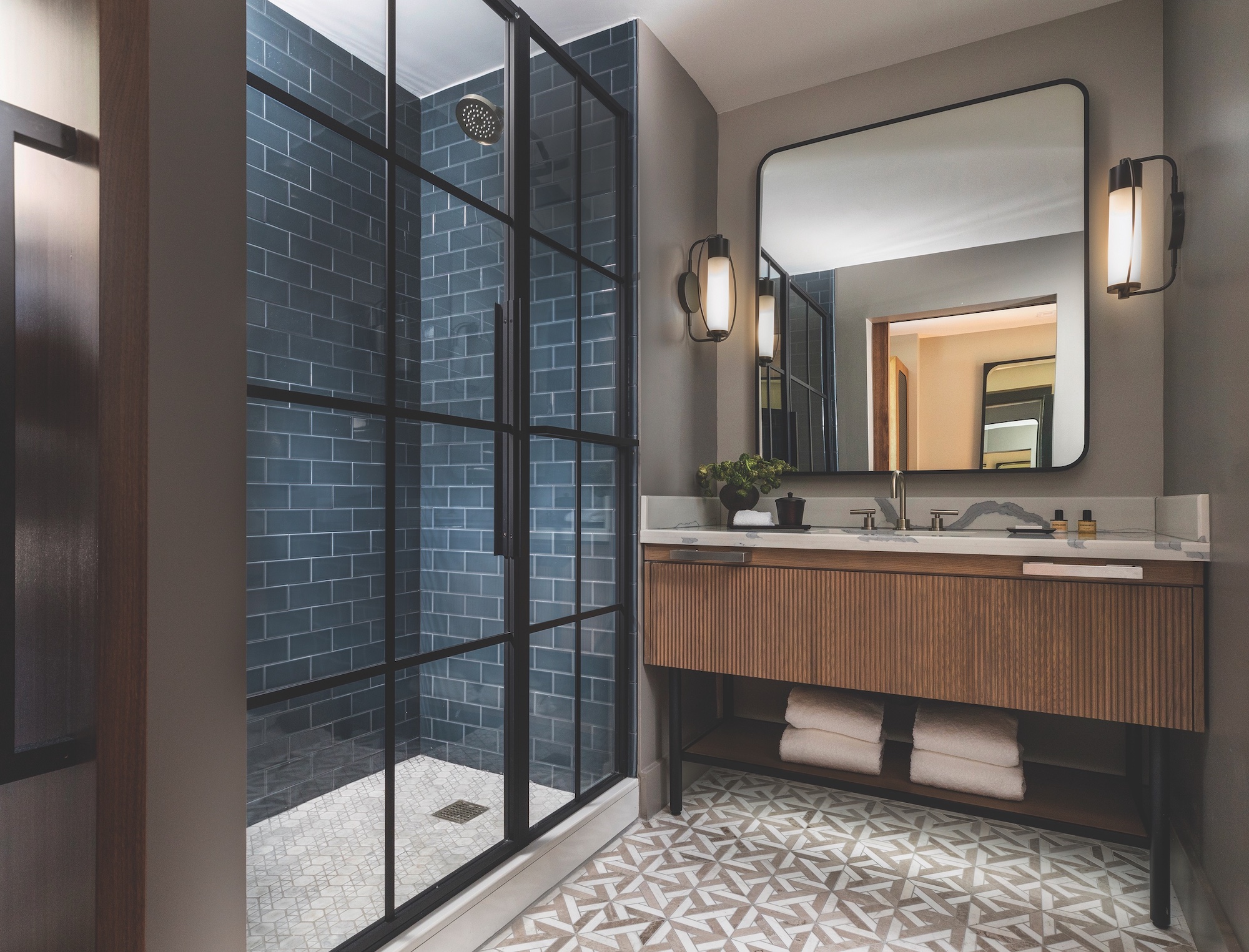
Balfour Beatty recently completed Wave Hotel, a 17-story, 239-room building whose exterior, which resembles a moving wave, reinforces the infrastructure of the Lake Nona, Fla., development. Another recently completed Balfour Beatty project, the 193-key Thompson Savannah Hotel in Georgia, located adjacent to Historic Downtown Savannah along the banks of the Savannah River, is part of the 54-acre Eastern Wharf mixed-use development. The hotel includes 8,000 sf of meeting space and another 8,000 sf of outdoor space, a chef-driven restaurant, and rooftop terrace with stunning views of the river and downtown.
6. Sustainable choices. Layton Construction’s Summerhays says that, with capital construction and operating costs at all-time highs, hotel operators are seeking sustainable and cost-saving solutions. He and other AEC sources say that lighting and HVAC systems have been getting the most attention lately, along with building controls and electrochromic glass.
Wellness is now part of hoteliers’ sustainable equations. Adache says hotels are more likely to lean toward healthier finishes with low or no VOCs. And Caption by Hyatt now prohibits single-use plastics, has hydration stations on each floor, and uses materials with recycled content as well as materials that improve with age and application, says Marshall.
Related Stories
Architects | Oct 27, 2015
Top 10 tile trends for 2016
Supersized tile and 3D walls are among the trending tile design themes seen at Cersaie, an exhibition of ceramic tile and bathroom furnishings held in Bologna, Italy in October.
Hotel Facilities | Oct 23, 2015
A visa-for-investment program will be extended through mid-December
EB-5 financing has been a boon to the hospitality sector.
Hotel Facilities | Oct 19, 2015
Dubai's Rosemont Towers will have an artificial beach and rainforest
The two 47-story high-rises will stand on a five-story podium that will house retail units, entertainment options (including bowling alleys, a cinema, and a skydiving simulator), and welcome lobbies.
Airports | Sep 23, 2015
JFK Airport's dormant TWA terminal will be reborn as a hotel
After 15 years of disuse, the Googie architecture-inspired TWA Flight Center at New York’s John F. Kennedy International Airport will be transformed into a hotel. Gizmodo reports that the city’s Port Authority chose a renovation proposal from Jet Blue this week.
Giants 400 | Sep 15, 2015
HOTEL SECTOR GIANTS: Gensler, AECOM, Turner among nation's largest hotel sector AEC firms
BD+C's rankings of the nation's largest hotel sector design and construction firms, as reported in the 2015 Giants 300 Report.
Office Buildings | Aug 24, 2015
North America’s real estate market is close to stabilization in cap rate pricing
The latest CBRE survey, covering the first half of the year, finds retail and hotel sectors experiencing the greatest compression.
Hotel Facilities | Aug 19, 2015
Plan to demolish historic Riviera Hotel & Casino approved by Las Vegas tourism board
The project is the first step toward a $2.3 billion expansion of the Las Vegas Convention Center.
Hotel Facilities | Aug 11, 2015
Snoozebox launches competition for designers to create pop-up hotels
Designers can leave their mark in the international hotel design industry.
High-rise Construction | Jul 29, 2015
Jerusalem to get a high-rise pyramid by Daniel Libeskind
Are pyramids making a comeback? The city of Paris recently approved a triangle-shaped building that stirred controversy from residents. Now, the city of Jerusalem gave Libeskind's pyramid tower the go-ahead.
Contractors | Jul 29, 2015
Consensus Construction Forecast: Double-digit growth expected for commercial sector in 2015, 2016
Despite the adverse weather conditions that curtailed design and construction activity in the first quarter of the year, the overall construction market has performed extremely well to date, according to AIA's latest Consensus Construction Forecast.





